Recalling Far Memory
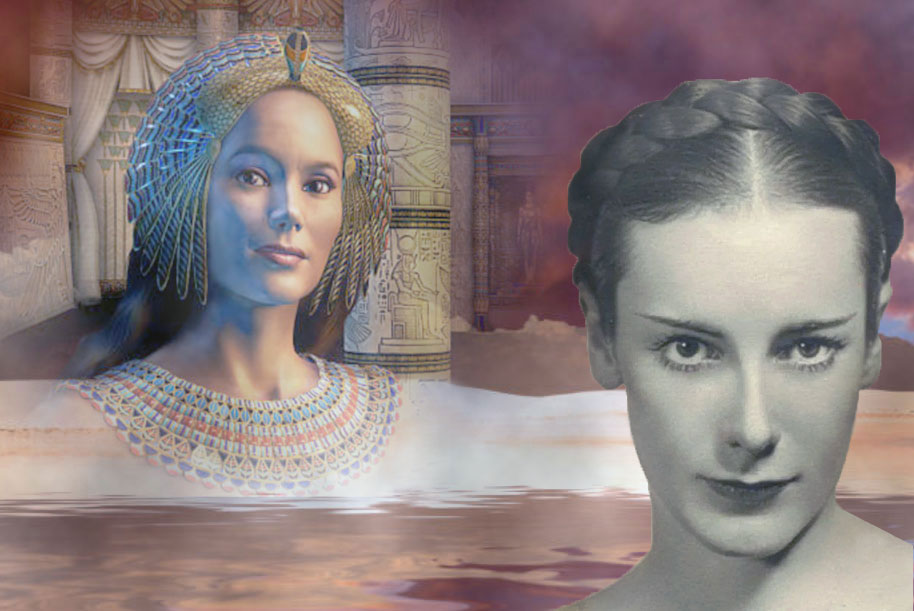 by Joan Grant
by Joan Grant
I was twenty-nine before I managed to recover the technique of being able to relive an earlier incarnation in detail and as a deliberate exercise. Until then, my conviction that I had had many lifetimes before I was born of English parents, in London, on the 12th of April 1907, was based on disjointed episodes from seven previous lives, four male and three female. These episodes, although as natural as memories from more immediate yesterdays, are frustrating, because I could not fill in the gaps in continuity which would have linked them into coherent sequences.
That everyone else did not have even this small degree of far memory was so difficult to understand, that until I was eleven I presumed that other people’s reticence about their own long history was only another of the incomprehensible taboos that complicated an Edwardian childhood. I also thought that everyone else had second sight; for as grown-ups pretended not to see each other if they met while scuttling in dressing gowns to the bathroom, it seemed no more, and no less, illogical that they pretended to ignore anyone who did not happen to be conventionally clothed in a physical body.
In my early twenties, by which time I was married to Leslie Grant and had a daughter, Gillian, I tried to extend the range of my perception by waking myself several times each night in order to write down my dreams. The majority of these dreams were only fragments of intellectual data forming patterns which had no more significance than those formed by revolving a kaleidoscope. But there were a few fertile grains among the chaff, and about twice a week I either brought back a clear recollection of what I had been doing on a supra-material level of activity, or some incident which I knew concerned one of my earlier personalities.
By this time I had acquired sufficient empirical experience to see the broad outlines of the progress of an individual during the initial four phases of his evolution. He starts with only enough energy to organize a single molecule. As this energy increases, and his consciousness begins to expand, he requires more complex forms through which to express them. After growing too adult to be contained by the mineral phase of existence, he enters the vegetable kingdom, and then graduates, by a series of incarnations as various species of animal, to his first incarnation as a member of the race of Homo sapiens.
During his first few lifetimes as a human being the whole of his personality incarnates, so he is likely to have approximately the same capacities and perceptions whether he happens to be incarnate or excarnate. But as his consciousness expands it becomes too wide to be contained within the framework of a single personality. So the incarnate individual is now both a single personality and an integral component of his total self. He is in effect both the segment of an orange and part of the whole orange: the juice, which is the essence of them both, being the character he has acquired by his own efforts during the course of his personal evolution.
Having been educated less through the efforts of numerous governesses and tutors than by listening to the conversation of my father and his fellow scientists, and then working for four years as a laboratory assistant in his Mosquito Control Institute, I was always alert to the possibility that the incidents of far memory might be only fantasies based on my hopes and fears, or on what I had heard or seen or read. Had radio, television, or more than a primitive form of cinematograph then been invented, by self-doubts would have been even more acute.
With practice I eventually learned how to discriminate between the pseudo and the factual, between a thought form I had created, such as the thought forms of the position of chessmen when playing the game without looking at the board, and a scene which had its own objective reality. To take a simple example: if I saw two men walking across a courtyard, one wearing a red and the other a green tunic, and I could change the color of the tunics, or even turn the tunics into kilts, then it was only a thought form. If the scene could not be altered, however intently I tried to change it, then I accepted its validity.
A more personally convincing check was that the emotions and the sensations associated with a genuine recall were as vivid as though they were being felt by myself in the factual present. The alteration of the focus of my attention had caused an incident in the past again to become Here and Now. Sometimes this could be not only terrifying but physically painful, for there was not awareness of the intervening period of clock time to cushion the immediacy of the impact.
So far as I have been able to discover, it is no more difficult to recall an episode which took place several millennia ago than to recall one from the current or preceding century. Here the analogy between a series of personalities and the segments of an orange is again opposite, time being the center at which the segments join and from which they are equidistant. The concept of successive personalities being threaded by Time like beads on a string is intellectually expedient but misleading.
Experience suggests that the earlier life which has the greatest resonance to the current one is the most likely to be recalled. This resonance may be set in motion by some close similarity of situation, by some mutual direction of effort, or by a resurgence of intense emotion. Revisiting a once familiar scent can sometimes evoke a spontaneous flashback, but this is seldom of more than mild interest. I spent three weeks in Egypt, with Leslie in March 1935, but except for being surprised that certain avenues of trees no longer led from Hat-shep-sut’s temple to Karnak, and feeling depressed that there were so many ruins instead of being pleased that there was so much left to see, I had not intimations that I had spent the best part of two thousand years in the Nile Valley.
Eighteen months later, through the trivial catalyst of psychometrising a scarab, I did the first of the 115 total recalls which became a posthumous autobiography of over 120,000 words. The scarab belonged to Daisy Sartorius, whose house had become my real home since the day I went there during a particularly unhappy crisis of my youth. She had already had the first of several operations for the cancer from which she died a year later, and it was the love we shared which caused me to concentrate on a life in which she had been my mother in the first Dynasty of Egypt, about 3000 years B.C.
The technique of this type of far memory, as opposed to the isolated incident which is a spontaneous recall or recovered with the aid of hypnosis, entails learning how to shift the level of the majority of one’s attention from the current personality to the earlier one, while still retaining sufficient normal walking consciousness to dictate a running commentary of the earlier personality’s thoughts, emotions, and sensations. During the early stages I would often think I had been dictating clearly, only to discover at the end of a session that I had not spoken a word. On other occasions I would think I had been speaking so slowly that at least a minute had elapsed between each phrase and then find that I had been talking so fast that Leslie, who could do Speed writing but not shorthand, had been able to get down only a bare outline of what I had said. Eventually I was to accept an instruction to speak louder or more slowly, but this took considerable practice, and until I had gained it, any kind of interruption would break the thread of concentration and I might not be able to get anything at all for two or three days.
Although I would usually begin a session by giving the age of Sekeeta—which was that earlier personality’s name, I could not predetermine which period of her life I was going to relive. One session might find me enjoying some happy incident from her childhood and in the next she was watching an operation in which a man’s skull was being trepanned after he had been thrown from his chariot during a lion hunt. By this time I knew that Sekeeta was the daughter of Pharaoh and that she became co-ruler with her brother after her father’s death.
Between an idyllic childhood and the lonely years of rulership Sekeeta spent ten years in a temple learning the far memory which would allow her to speak with personal authority. The temples of that time were not places of worship but were comparable to co-educational universities or teaching hospitals in which pupils learned various forms of extrasensory perception. Seers, whose role was similar to the modern radiologist; healers, who supplied extra energy to the physical body of their patients and who were considered senior to the physicians; hypnotists, who induced anesthesia during surgical operations or for a difficult childbirth; and temple counselors, who had a great deal more insight than the majority of modern psychiatrists—in fact they would have been amazed that the people whose label means “healer of the soul” often do not believe in the existence of the organ they purport to treat.
Those who were training for a degree in far memory usually gained the additional qualification of being able to tune in to the relevant episode from a patient’s earlier life which was affecting his present personality. They also had to be able to remember at least ten of their own deaths so as to be able to reassure anyone who suffered from a fear of dying; although this was seldom necessary in that enlightened culture in which birth and death were familiar changes of state, as commonplace as sleeping and waking.
The graduation examination for far memory was arduous. The pupil was shut in an initiation chamber entered by a narrow passage closed by three drop stones to increase its resemblance to a tomb, for the initiation symbolized a rebirth.
When I or rather Sekeeta heard those drop stones fall, I knew that I would be alone in the dark silence for four days and four nights. I had three alternatives. I could try to avoid the issue by staying awake, in which case I should have to leave the temple and would never be able to serve Egypt as a Winged Pharaoh, a priest as well as a ruler. I could try to do what was expected of me, and fail, which might drive me insane. . . . “Shall I be as Hekket who failed yet did not die, and who sits in the courtyard with blind eyes and wet sagging lips?” Or I must prove that I could remember other levels of reality, remember the Beautiful Country, which makes living in three dimensions seem so heavy, so small, and so drab. And remember the hells which men create for themselves, in spite of the best endeavors of their forerunners, from the substances of their own cruelty, their own paucity of affection. ~ Excerpt from Many Lifetimes
ABOUT JOAN GRANT
As a born psychic who trained herself to remember past lives, Joan Grant did not set out to be a writer, yet 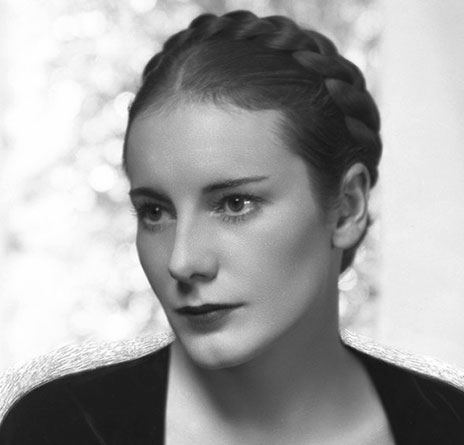 turned out to be a born storyteller, able to grip and inspire her readers. Her conviction that “it is within each of us to be able to help others and to change their lives for the better” was as much a motive for writing books, as it was for living.
turned out to be a born storyteller, able to grip and inspire her readers. Her conviction that “it is within each of us to be able to help others and to change their lives for the better” was as much a motive for writing books, as it was for living.
Her method was unconventional and as she described in her own words above, a far memory technique. She would dictate random memories from her previous lives (the notebooks still survive), and then slowly piece them together into a coherent whole, understanding how one incident related to another. Her Far Memory books were not some type of automatic writing, but the result of authorial hard work: poetic in style, vivid in detail, with engaging protagonists (usually women) who used their wit, courage and spiritual wisdom to prevail against the forces of dishonesty and corruption. Set in far off times, they nevertheless resonate as teachings for our own present time.
In 1937, one of the most highly praised books ever written about reincarnation came into public view. Her book titled Winged Pharaoh was a true masterpiece in which Grant wrote about her past life in Egypt where she lived as a priest-pharaoh trained in a secret technique that would allow her to to tune in and remember past lifetimes in great detail. In that particular lifetime as “Sekeeta” (a pharaoh’s daughter), she spent ten years in an Egyptian temple to learn this technique. This training required that she and the other trainees remember at least ten of their own past life deaths. The trainees were further required to pass a final examination whereby they were to undergo seven ordeals while shut away in a tomb for four days and four nights. Sekeeta passed the test and brought the ability known as “far memory” into the twentieth century via the incarnation of Joan Grant.
Joan experienced “far memory” her entire life. She was highly psychic and experienced precognitive and prophetic dreams as well. As a young girl she had the tendency to keep those “secrets” to herself.
Joan was born into a wealthy family as the daughter of Jack and Blanche Marshall. Famous people often frequented the Marshall home. One of them was writer H.G. Wells who Joan met when she was just sixteen years old. Joan felt comfortable enough with Wells to tell him some of her “secrets.” Sympathizing with the young girl, Wells told her, “It is important that you become a writer.” He further told her that she should continue to keep those secrets to herself until she was, “… strong enough to bear being laughed at by fools.”
ETHICS
Throughout her life – Joan would say with conviction, “Throughout her many lives” – she had been preoccupied with ethics. By this she meant that fundamental and timeless code of attitudes and behavior to one another on which the health of the individual and society depends.
“Looking back to my childhood or down a vista of millennia, I see no change in the basic principles of benign living. What are these basic principles?
*That every individual is entirely responsible for their behavior, and for their reaction to circumstances.
*That physical age is irrelevant.
*That labels of rank, or class, or nationality, or race, or creed, or sex are so transitory that in the long run they are trivial.
*And that character, which has nothing to do with intellect or skill, can evolve only by increasing our capacity to love, and to become lovable.
“These basic principles are implicit in a belief in reincarnation and it is the privilege of all of us to help each other to put them into practice.”
FAR MEMORY
“I was twenty-nine before I managed to recover the technique of being able to relive an earlier incarnation in detail and as a deliberate exercise. Until then, my conviction that I had had many lifetimes… was based on disjointed episodes from seven previous lives, four male and three female. These episodes, although as natural as memories from more immediate yesterdays, are frustrating, because I could not fill in the gaps in continuity which would have linked them into coherent sequences.
“That everyone else did not have even this small degree of far memory was so difficult to understand that until I was eleven I presumed that other people’s reticence… was only another of the incomprehensible taboos that complicated an Edwardian childhood.
“I also thought that everyone else had second sight, for as grown-ups pretended not to see each other if they met while scuttling in dressing gowns to the bathroom, it seemed no more and no less logical that they pretended to ignore anyone who did not happen to be conventionally clothed in a physical body.
“In my early twenties…I tried to extend the range of my perception by waking myself several times a night in order to write down my dreams…. With practice I eventually learned how to discriminate between the pseudo and the factual, between a thought form I had created… and a scene which had its own objective reality.
“… The technique of this type of far memory, as opposed to the isolated incident which is a spontaneous recall… entails learning how to shift the level of the majority of ones attention from the current personality to the earlier one, while still retaining sufficient normal waking consciousness to dictate a running commentary of the earlier personality’s thoughts, emotions and sensations.”
ON DYING
“A body is like a cloak you let drop from your shoulders – not even as difficult as a dress you have to unbutton and step out of,” said Joan Grant to a friend who was dying. Because she could remember having died many times, she spoke with authority when she said that death was not to be feared. Throughout her life she expected to help others make the transition from life to “the other side of the river”.
As a child during World War I, Joan had dreams of comforting the newly dead in the trenches of Flanders and later she would make a point of accompanying her friends in what she called an “upstairs” body when they underwent an operation or perilous journey. In Many Lifetimes Joan and her husband Denys Kelsey describe in detail the ways they were able to help their friend Ray and communicate with her after she died of cancer.
Towards the end of Winged Pharaoh, Sekeeta offers a comforting description as her mother’s spirit is released from her earthly body:
“When my mother died, I prayed to the Gods that I might not shadow her noonday by my sorrow. She left Earth smoothly and quietly as a sailing boat drifts downstream on the cool wind of sunset. It was as if she had lived in a house with closed shutters, and had opened the door upon a garden where dreams were flowering in their glory, for she had walked out into the Light and seen my father waiting for her.”
WINGED PHARAOH
“I was conceived in the Blue Grotto at Capri in June 1906” begins Joan Grant’s autobiography. A fascinating, even breathtaking, account of a woman born with second sight and far memory, who as a spirited child believed these were abilities the grown-ups in her Edwardian upbringing shared, but did not speak about in “polite” society. Having learned to disown her psychic abilities, Joan emerges perplexed and rebellious from the arms of her eccentric, yet very conventional family, determined to do what she can to heal the world. She suffers heartbreak, finds friendship and marriage, rebels against the traditional role of woman, and in her late twenties decides she must honor her unusual gifts despite her discomfort at being “different”. The result was the publication of Winged Pharaoh in 1937 and a life ahead as a celebrated author, renowned for her wisdom and the very psychic insights she had found at first so hard to accept.
Her many books based on her past lifetime experiences have been translated in up to 15 languages and for eighty odd years now Winged Pharaoh has never been out of print.
Winged Pharaoh—by Joan Grant—A Review
First published by Arthur Barker, London, 1937.
This is one of those very rare past-life novels that rings true.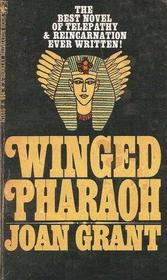
The book begins with the birth of ‘Sekeeta’—destined to become the ‘Pharaoh’ of the title—and continues to narrate her life story from childhood through her moving initiation into the Mysteries, to old age and death. Grant’s descriptions of life in Egypt during the 1st Dynasty are both compelling and poetic. At times her language rises to such heights as to carry the reader into a higher and better world—bringing tears of mingled joy and sadness to one’s eyes.
The book gives many absolutely correct explanations of occult laws and principles as well as some of the secret teachings of the Egyptian Mystery Schools. We feel that this book has great value and will not disappoint all those who truly love Ancient Egypt and wish to learn her Sublime Mysteries.
Was this life confirmed by later archaeological discoveries? See article here.
Full pdf download of Winged Pharaoh here.
More about Joan Grant here.
Posted in Other Topics, Reincarnation, Spiritualitywith comments disabled.


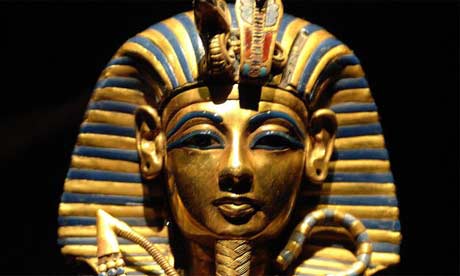
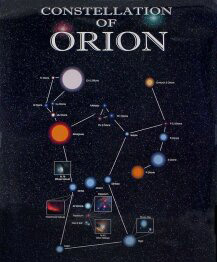


[…] Recalling Far Memory — Unariun Wisdom […]